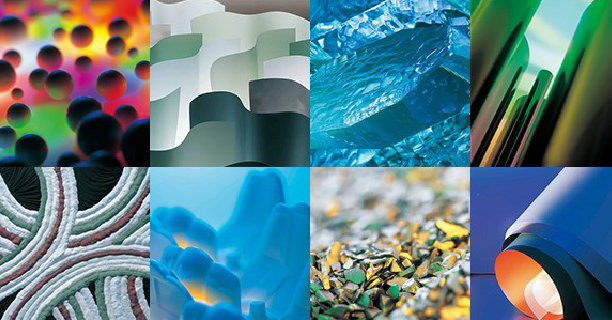Changing to Suit the Customer:
ECM/CSP Solutions and AI from a Users’ Standpoint


ECM/CSP Solutions Turn COVID-19 Office Work Changes into an Opportunity

As digitalization in the workplace progresses, all kinds of knowledge and information are converted into data regardless of the industry. In this context, the more human resources and business sectors expand, the more complex data management becomes. While the COVID-19 pandemic triggered rapid progress in both digitalization and remote-office hybrid work environments, there continues to be an increasing need to centralize the management and operation of all kinds of data and capitalize on this in the workplace without concealing accumulated knowledge.
The development team from Kyocera Document Solutions Development America is capitalizing on Kyocera's expertise and experience in MFPs and printers to tackle the major challenge of making office work more efficient. Based in California, this team is spearheading development in both hardware and software and aims to produce innovative technology that generates new value in business contexts.
ECM/CSP Solutions
ECM/CSP solutions will make capturing, storing, and reading data more efficient and automate workflows, such as those for circulation. Furthermore, seamlessly connecting core systems and databases will enable cross-sectional searching and display of in-house information and related documents from PCs and mobile devices, thereby realizing reduced workloads and simplified processes.

Expanding Outside MFPs and Printers to Bring Customers More Comprehensive and Efficient Operations
*ECM: enterprise content management / CSP: content services platform
-
 General ManagerBusiness Solutions Division
General ManagerBusiness Solutions Division -
 KDDA President
KDDA President -
 Machine Learning EngineerBusiness Solutions Division
Machine Learning EngineerBusiness Solutions Division
-
 Department Manager,
Department Manager,
ASIC and AI ResearchSoftware Development Division -
 Department Manager,
Department Manager,
Software ArchitectureSoftware Development Division
-

Through our ECM/CSP solutions, we aim to make businesses more efficient with centralized management of office data, from text to emails, audio, images, and scanned documents. Currently, with work environments changing dramatically due to COVID-19, I sense a greater need for this business than ever before.
-

Across the globe, work is not restricted to the office concept anymore after COVID-19. The decentralization and burying of data were issues even in an era when working in an office was the norm. Still, through people breaking loose from the obligation to work in a particular location, it has become imperative that we tackle those issues. Ease of access to data by anyone and from anywhere, and the smooth access, storage, and circulation of that data, will be critical prerequisites and indispensable as a foundation for business operations in the future.
-

You are responsible for customer software development. Were there any new requirements that arose after COVID-19?
-

From the point of view of MFP and printer functionality, there was a massive increase in the number of people wanting touchless functionality to prevent infection. In addition, there were requests to use voice recognition or mobile devices to perform tasks such as printing and copying without touching the equipment.
-

The need for touchless functionality became more pronounced during COVID-19. MFPs and printers fitted with AI voice recognition services would enable users to take maximum advantage of equipment functionality, and this was a discovery for us.
-

MFPs and printers operated with touch screens are widespread nowadays, but it is difficult for those who work in offices to master all those functions perfectly, right?
-

If everyone could easily use the extended functionality of MFPs and printers—for example, using products fitted with AI voice recognition services—we could make office procedures more and more efficient. As in this kind of example, one method involves bringing in AI technology from outside and having it work with MFPs and printers. However, we are also researching how to incorporate AI and machine learning functions into our products.
-

I am responsible for developing solutions for document analysis using AI. Technology for reading text in printed documents is already spreading through the market because of the digitalization of analog data and greater operational efficiency. I am working on technology to take that one step further, with processing that uses AI to extract, classify, and save document characteristics and keywords.
-

When this technology is completed, how will things change?
-

At present, our goals are to use MFPs to read deciphered documents using AI and to reach a level where everything from extraction to data storage can be completed automatically. For example, content can be divided into folders and, depending on the type of document, distributed to the appropriate personnel. Furthermore, because administrative work that until now was undertaken by hand can be automated, it should be possible to use the free time generated by this for creative work.
-

I see. I am also developing AI-related technology, and most recently, we have just completed a super-resolution scanning program. By using this technology and MFPs to turn documents into more precise data, things like adding color to old black-and-white photographs have also become possible. The ability to provide offices with this kind of extended functionality may be the greatest strength of Kyocera Document Solutions.
-

That's true. We originally started as an MFP and printer manufacturer and broadened the scope of equipment utilization by providing solutions for assisting with business operations. In this respect, we have a good reputation for upgrading the performance of office equipment through customization without customers having to purchase replacement equipment. As engineers, we can also deliver new technology to workplaces, making it easier for us to feel a sense of achievement.
Incorporating Flexibility in Solutions by Integrating “AI for All”

-

Something that I have felt more strongly about since COVID-19 is that office workstyles and the environments that surround them is constantly changing. For this reason, what we sought is the ability to deploy technology that can quickly and flexibly respond to the issues on the ground that we just talked about. That is our strength that will support the business in the future, and it is something we must continue to improve.
-

I would also like to incorporate that flexibility into the AI technology we develop going forward. For example, it was commonplace for highly knowledgeable and skilled engineers to design and implement AI systems. But only being able to make adjustments and changes with the help of experts leads to a situation in which we must respond more quickly to needs on the ground.
-

That’s true. With research and development, attaching importance only to the viewpoints of engineers is something we should avoid. I think solutions that do not incorporate customer viewpoints—for example, flexibility to suit customer needs and ease of use after introduction—result in us losing ground to our competitors.
-

For this reason, while integrating sophisticated AI technology, I want us to aim to make "AI for all." In other words, AI that enables users to make adjustments directly in line with their needs and to alter specifications in line with their work. We will allow anyone to increase functionality simply and as if in a dialog. If we make this kind of AI, our ECM/CSP solutions will be widely sought-after technologies, regardless of the industry or sector.
-

It is a beautiful dream, isn't it? I have been an engineer for many years, too, and making mistakes is an inevitable aspect of research. Numerous obstacles will arise, and sometimes you will find yourself at a dead end. But the accumulation of failures is proof that you are close to succeeding. I hope that young engineers will remember this.
-

When confronted with difficulties, I always recall the philosophy of our founder, Kazuo Inamori, who said, "Face every challenge with courage." Those words instilled a curiosity about things and taught me the importance of overcoming my limitations. Therefore, even when a project is not proceeding as planned, those words are a driving force that raises my spirits.
-

If I fail, I return to the beginning, analyze the causes, and try again. It is essential to repeat this cycle as quickly as possible and undertake development repeatedly. Take on challenges, create prototypes, and deliver them to customers immediately. After accumulating these tiny successes, significant results will surely await you.
-

As opposed to simply selling equipment and software, our ECM/CSP solutions business should aim to be a partner who enables businesses to grow. By building up a dialog with customers every day and taking on the challenge of research and development while remembering to think from the customer's point of view, we will realize new technology that brightens the prospects for tomorrow's business environment.
Understanding New Challenges and Future Projects
Being Undertaken at Kyocera
Kyocera’s Main Growth Markets
-
 Ever since the company was founded in 1959, Kyocera has engaged in the application and development of advanced ceramic (also known as “fine ceramic”) technology in a wide range of fields, from materials and parts to devices, services, and networks. This site looks at the various technologies shaping the future.
Ever since the company was founded in 1959, Kyocera has engaged in the application and development of advanced ceramic (also known as “fine ceramic”) technology in a wide range of fields, from materials and parts to devices, services, and networks. This site looks at the various technologies shaping the future. -
 Kyocera has been developing market-leading breakthroughs since its very inception. In this website,we present information on Kyocera’s intellectual property and licensing programs that can bring new value to the world.
Kyocera has been developing market-leading breakthroughs since its very inception. In this website,we present information on Kyocera’s intellectual property and licensing programs that can bring new value to the world. -
 Kyocera’s open innovation initiative brings together technologies and ideas from both within and outside the company to create new value and develop new businesses.
Kyocera’s open innovation initiative brings together technologies and ideas from both within and outside the company to create new value and develop new businesses.









